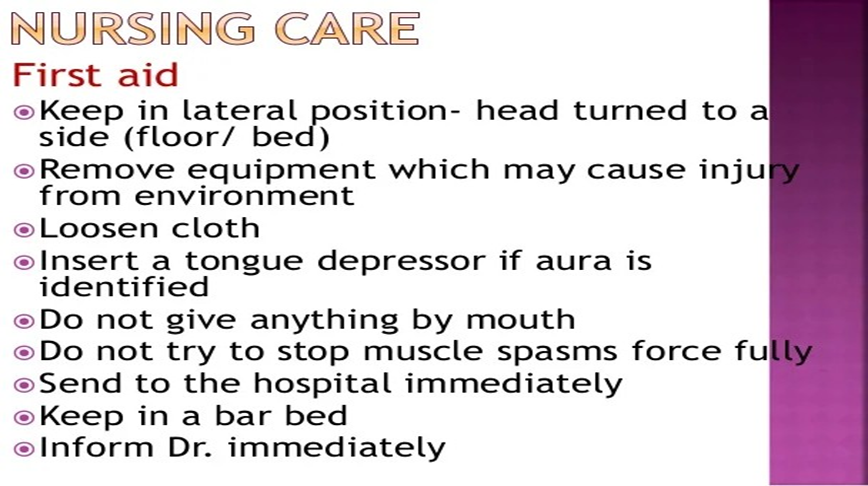A nurse is collecting data from a school-age child who has asthma. The nurse should identify which of the following findings?
Periodic episodes of wheezing
Low-grade fever in the afternoon
Abrupt onset of
set of sharp pleuritic pain
The Correct Answer is A
A. Wheezing, which is a high-pitched whistling sound heard during expiration, is a common symptom of asthma. It occurs due to narrowed airways and airflow obstruction, often in response to triggers such as allergens, respiratory infections, or exercise.
B. Low-grade fever in the afternoon is not typically associated with asthma. Fever is more commonly seen in response to infections, such as respiratory infections, which can exacerbate asthma symptoms but is not a direct manifestation of asthma itself.
C. Without the complete statement, it is difficult to assess its relevance to asthma symptoms. However, an abrupt onset of symptoms, such as sudden shortness of breath or chest tightness, may occur during an asthma attack or exacerbation.
D. Sharp pleuritic pain is not a typical finding in asthma. Pleuritic pain, which is sharp and worsened by breathing, is more commonly associated with conditions affecting the pleura, such as pneumonia or pleurisy.
Nursing Test Bank
Naxlex Comprehensive Predictor Exams
Related Questions
Correct Answer is C
Explanation
C. The priority during a seizure is to protect the patient from harm, particularly from aspiration if they vomit or have excessive saliva production. Turning the client to a lateral position helps maintain an open airway and prevents aspiration. This action should be taken immediately after lowering the client to the floor to ensure their safety.
A. Providing oxygen is important for a patient experiencing a seizure. However, it's not the first action to take. The priority is to ensure the patient's safety and protect them from injury during the seizure.
B. Administering anticonvulsant medication during an active seizure is not appropriate. Anticonvulsants are typically prescribed as maintenance therapy to prevent seizures or to manage seizure disorders in a controlled manner, not during an acute seizure episode.
D. Monitoring oxygen saturation is important but it's not the first action to take during an active seizure. Ensuring the patient's safety and protecting them from injury take precedence. Oxygen saturation can be assessed once the patient is in a safe position.

Correct Answer is A
Explanation
A. Prompt initiation of appropriate antibiotics is essential to prevent the spread of infection, alleviate symptoms, and promote healing.
B. Surgical debridement of necrotic tissue is often necessary for treating acute osteomyelitis, especially if there is extensive tissue damage or the formation of abscesses. Surgical intervention aims to remove infected and dead tissue, reduce bacterial load, and promote wound healing.
C. Antipyretic therapy, such as acetaminophen or ibuprofen, may be administered to reduce fever and alleviate associated symptoms in clients with acute osteomyelitis. While fever management is important for comfort and overall well-being, it may not be the immediate priority unless the fever is high or causing significant distress.
D. Adequate nutrition and hydration support immune function, tissue repair, and overall recovery. However, while important for long-term management, optimizing nutrition and hydration may not be the immediate priority unless the client is severely malnourished or dehydrated.
Whether you are a student looking to ace your exams or a practicing nurse seeking to enhance your expertise , our nursing education contents will empower you with the confidence and competence to make a difference in the lives of patients and become a respected leader in the healthcare field.
Visit Naxlex, invest in your future and unlock endless possibilities with our unparalleled nursing education contents today
Report Wrong Answer on the Current Question
Do you disagree with the answer? If yes, what is your expected answer? Explain.
Kindly be descriptive with the issue you are facing.
